
TRANS for orchestra supplement
Stockhausen Complete Edition on CD
Since 1991, a complete edition of all recordings in which Karlheinz Stockhausen has personally participated is being released on compact discs. Each CD in this series is identified by Stockhausen's signature followed by an encircled number. The numbers indicate the general historical order of the works.
Stockhausen realised the electronic music and participated in these recordings as conductor, performer, sound projectionist, and musical director. He personally mixed down the recordings, mastered them for CDs, wrote the texts and drew the covers.
- The compact discs may be obtained from the Stockhausen-Verlag: Kettenberg 15, 51515 Kuerten, Germany (www.stockhausenCDs.com).
Karlheinz Stockhausen
TRANS for orchestra
Supplementary text
Separate rehearsals for strings and soloists:
(This text does not include the sectional rehearsals for the individual wind-percussion groups or the tutti rehearsals for the whole orchestra.)
A CD of the weaving-loom sounds should be used for synchronisation in the following musical and staging rehearsals. (The CD may be ordered from the Stockhausen-Verlag.) Therefore, a CD-player and 2 loudspeakers are needed for the rehearsals.
| ½ hour | concertmaster (section 17) |
| 2 x ¾ hour | solo violist (section 6) |
| 2 x ½ hour | solo violoncellist (section 12-13) |
| 2 x 2 hours | all strings |
| 2 x ½ hour | piccolo trumpeter (section 23) |
| ½ hour | drummer and orchestra attendant. |
The tutti rehearsals with staging, amplification and lighting follow the sectional rehearsals.
The viola solo is played by memory (like a gypsy), as is the piccolo trumpet solo, if possible.
Frequency corrections at the mixing table
The weaving-loom sounds should sound like real weaving shuttles, only greatly amplified. Thus, usually low and very high frequencies must be added.
The amplification of the tutti strings may never be omitted. A wide and especially a high, compact sound of the string orchestra is essential. The lateral loudspeakers must be very high (7–8 m), to avoid feedback. The strings should sound loud (therefore also the wind-percussion orchestra must always be sufficiently amplified so that it is never completely covered by the strings and only occasionally becomes "blurred"). The string soli should be clearly heard but should not fall out of the context.
Practical suggestions for the conductor
| 1 ) | TRANS is one half of a concert (before or after the intermission). For the other half of the concert it is recommended to either perform a Stockhausen work for chamber ensemble in front of the curtain or, as has been done many times, TRANS is performed first, then – following an intermission – for instance AM HIMMEL WANDRE ICH for 2 singers in front of the curtain, and after a second intermission TRANS is repeated. |
| 2 ) | It is stated in the score that TRANS should be performed on a theatre stage; however, if that is impossible, practice has proven that on concert stages it is also possible to stretch the gauze curtain in front of the strings and to place the violet lamps on the floor in front of the curtain. |
| 3 ) | The rental material should be ordered ahead of time from the Stockhausen-Verlag, Kettenberg 15, 51515 Kürten (stockhausen-stiftung@t-online.de). The orchestra material sent by the Stockhausen-Verlag includes clips for attaching the music sheet to the scrolls of the violins and violas. Celli and double-basses stick the small music sheet onto the instrument with scotch tape. |
| 4 ) | The wooden stands used as arm supports for violins and violas must be either built or loaned from the Stockhausen-Verlag. |
| 5 ) | Copies of page XI (Manner of Performance) should be given to each participating musician (translate if necessary). |
| 6 ) | Copies of page 0 (zero) of the score must be made for the person who builds the podia for the strings. The width of the stage must be measured and it must then be decided if the strings should sit in 2 or 3 rows behind one another. |
| 7 ) | The podium for the trumpeter with stairs must be built in good time (with black front partition reaching hip-height of the player). A spotlight is attached to the floor or onto the railing in front of the trumpeter, so that his face is lit from below front (ghostly). Fade in the lamp only after he is in place, and fade it out at the end of the solo before he leaves. |
| 8 ) | The orchestra attendant should be the usual orchestra attendant. Prepare low music stand with theatre lamp, switch, and long cable. During actions, do not turn the back towards the public, and do not cover the cellist visually! |
| 9 ) | Electric organ or synthesizer must have its own loudspeaker. It is best to use a synthesizer with amplifier and loudspeaker because then the pitches can be played as low as notated. |
| 10 ) | The mixing console should be positioned in the middle of the hall. The mixing console should be low and invisible to the audience – its upper surface a maximum of 60 cm above the floor – with low music stand and a completely inconspicuous small reading lamp. The mixing console must on no account be placed on a table or on the seats. |
| 11 ) | Unfortunately, most stage curtains are opened and closed automatically. In any case, one should try to open and close the curtain by hand as slowly as possible (ca. 60 seconds long). If that is impossible, then another curtain should be hung in front. If also that is impossible, then the piece should not be performed. |
| 12 ) | At the end when the curtain has been closed, it must not be re-opened. The usual bowing of the orchestra should not take place (explain this to the orchestra!). Conductor, Solo violist, solo violoncellist and trumpeter may come in from the side and bow in front of the curtain. (Prepare special spot lights for this.) |
| 13 ) | The sound projection should be learned during several rehearsals. It is a misunderstanding to think that the wind-percussion orchestra should be softer than the weaving-loom sounds and the strings. Even when – as prescribed – the invisible orchestra is played back as loudly and clearly as possible, it is automatically more or less blurred by the strings. |
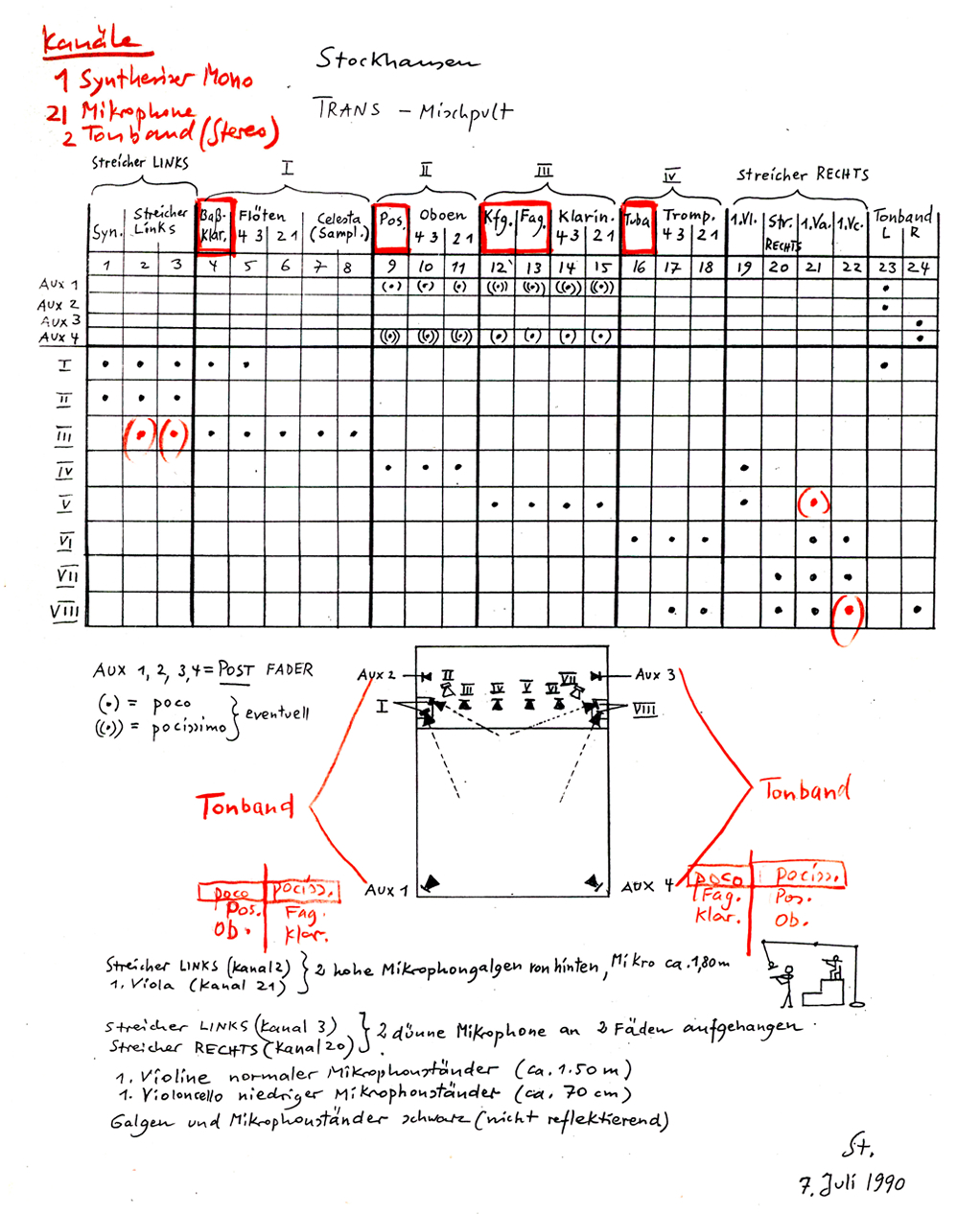
TRANS – Errata in the Score
| T. 98–99 | I | Celesta |  |
| T. 121 | II | Vibraphon | no staccato |
| T. 11 | III | Glocken | two accents are missing |
| T. 41 | III | Klar + Fag | last two notes of triplet also staccato |
| T. 224 | III | K-Fag |  |
| T. 250 | III | Fag. + K-Fag |  |
| T. 314 | III | Fag. + Kfag: |  |
| T. 197 | IV | Tuba |  is missing is missing |
| TRANS Supplement: | 1) How to attach parts to instruments |
| 2) arm supports |
| 1 ) | Suggestions for attaching the tutti string parts to the instruments: (For performances in Paris in 2013 the following solutions proved to be satisfactory) For the violins and violas: For the double-basses: clothes pins. But the players also found other individual solutions. By all means experiment before rehearsals begin! |
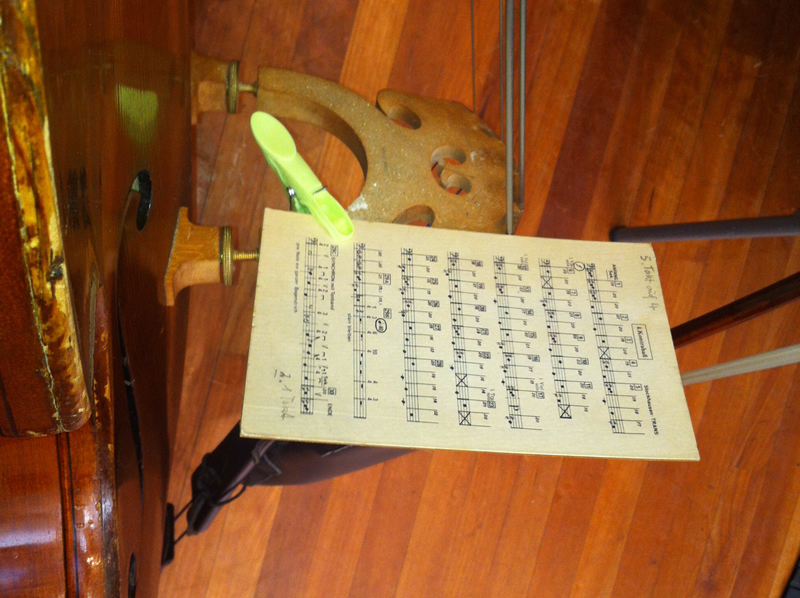
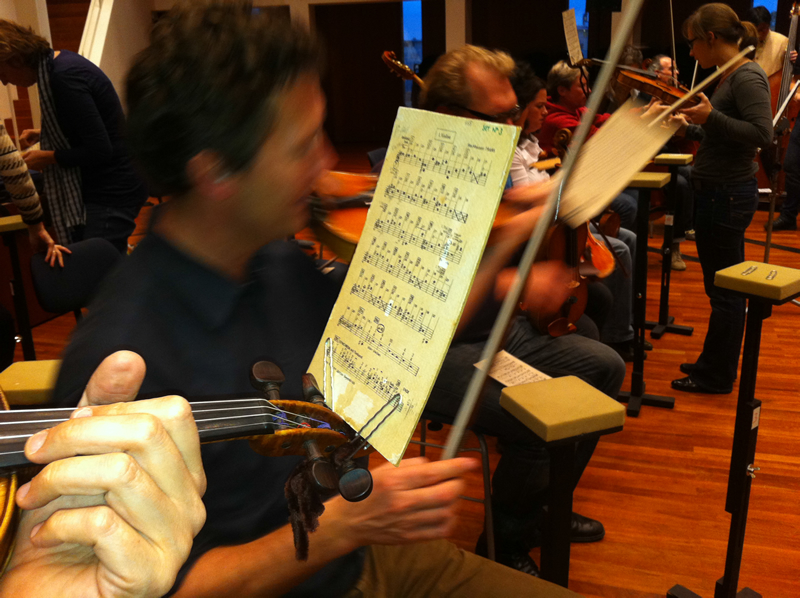
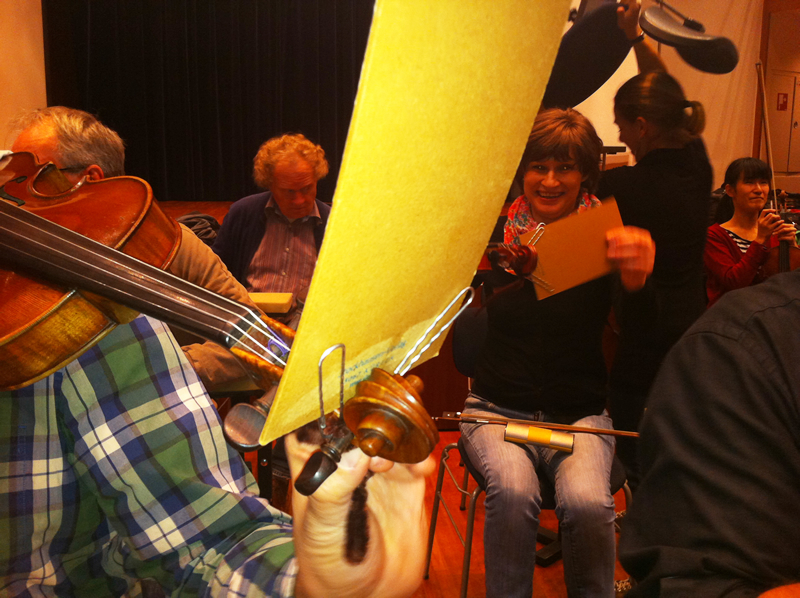
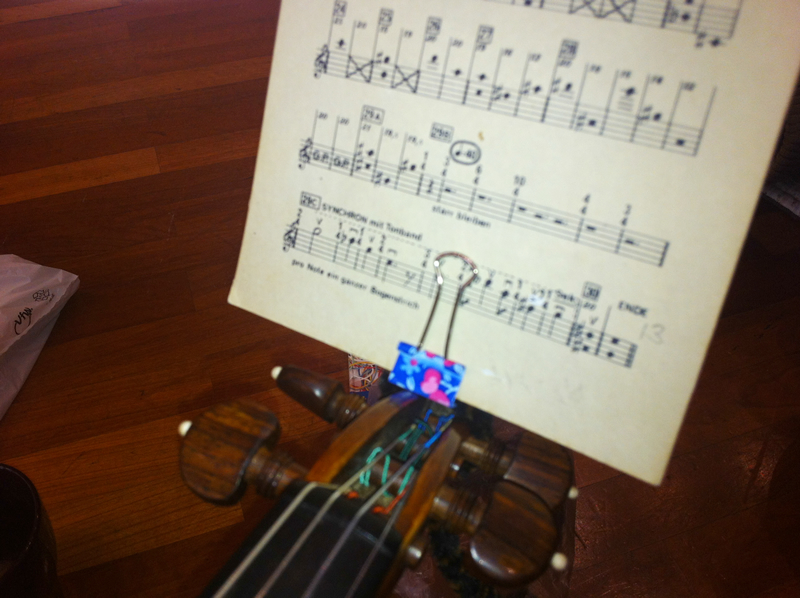
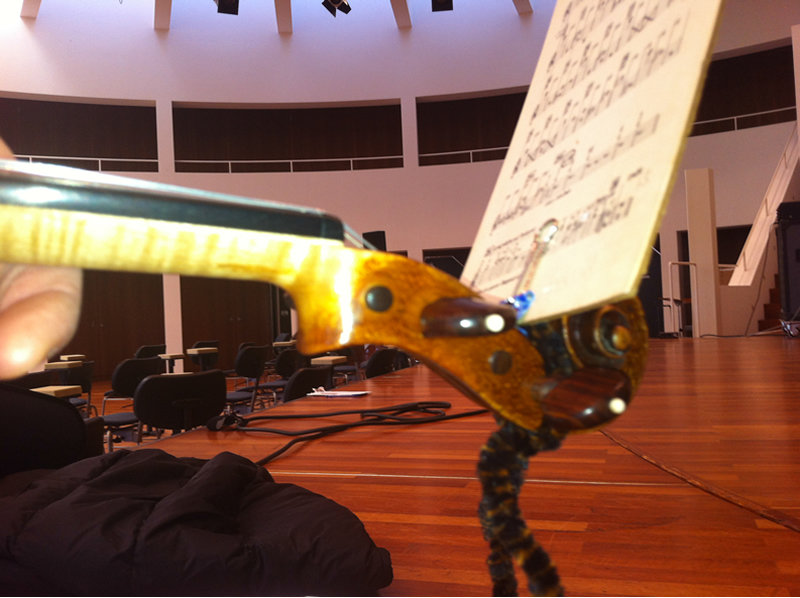
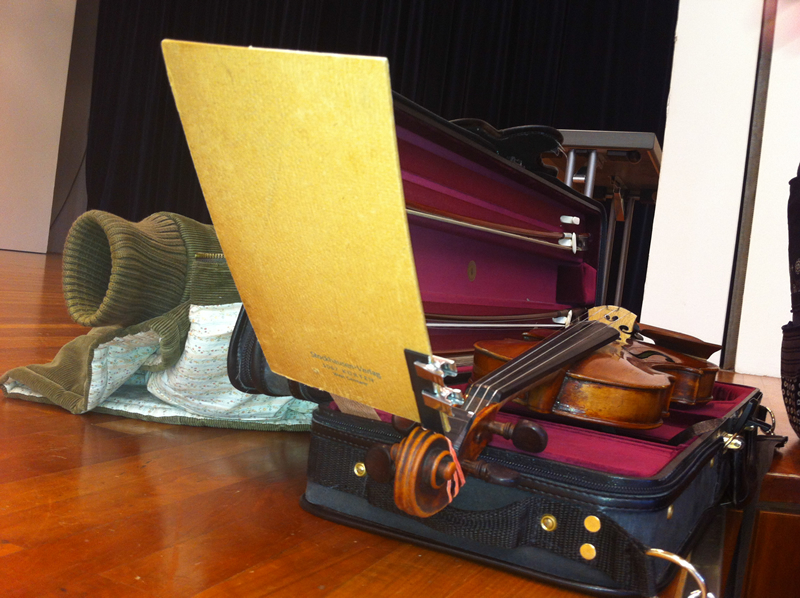
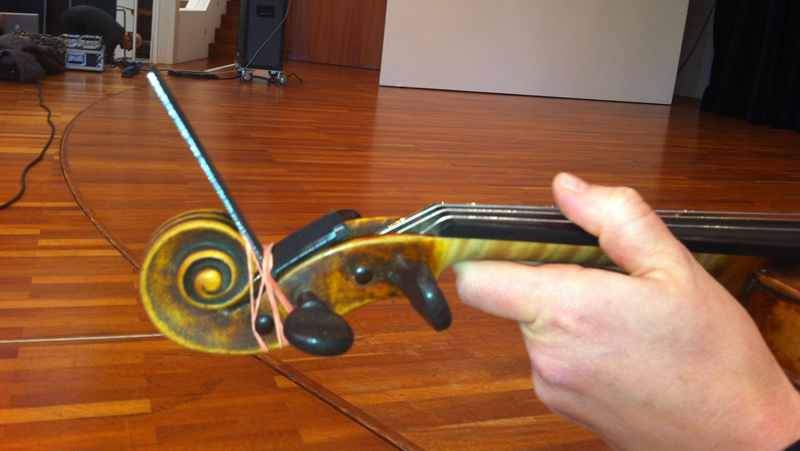
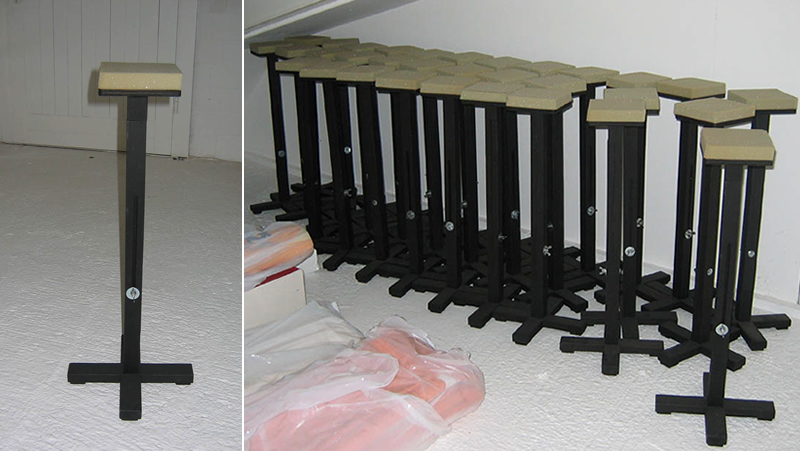
2) arm supports. Wooden stands used as arm supports for violins and violas must be either built or loaned from the Stockhausen-Verlag: wood support, adjustable in height with foam rubber cushion |